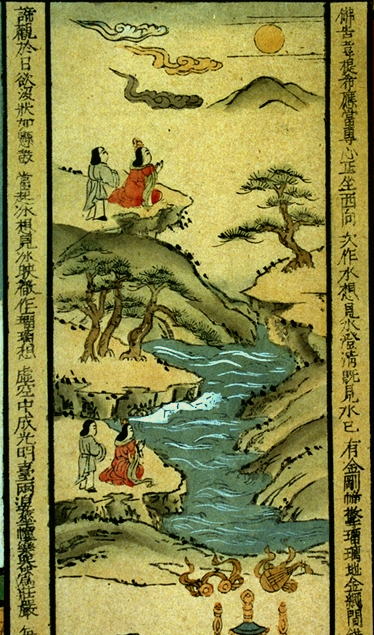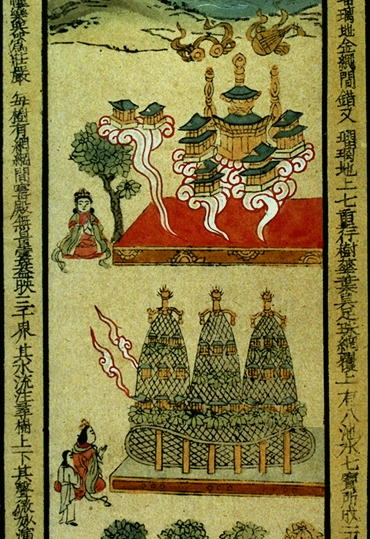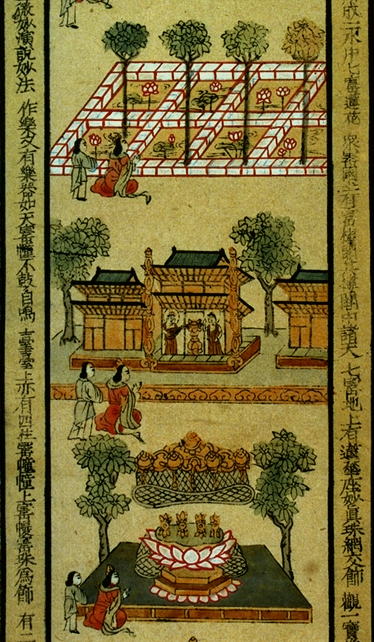
Contemplation of the setting sun and water
Illustrated
(9-15)
Illustrations from the Taima Mandala
 Contemplation of the setting sun and water |
| Thirteen contemplations: 1) contemplation of the setting sun |
| 2) contemplation of the water |
 Contemplation of the ground and the trees |
| 3) contemplation of the ground |
| 4) contemplation of the trees |
 Contemplation of the ponds, various objects, and the lotus-throne |
| 5) contemplation of the ponds |
| 6) contemplation of various objects |
| 7) contemplation of the lotus-throne |
Go to Next File; return to Sukhavati-Index; Index